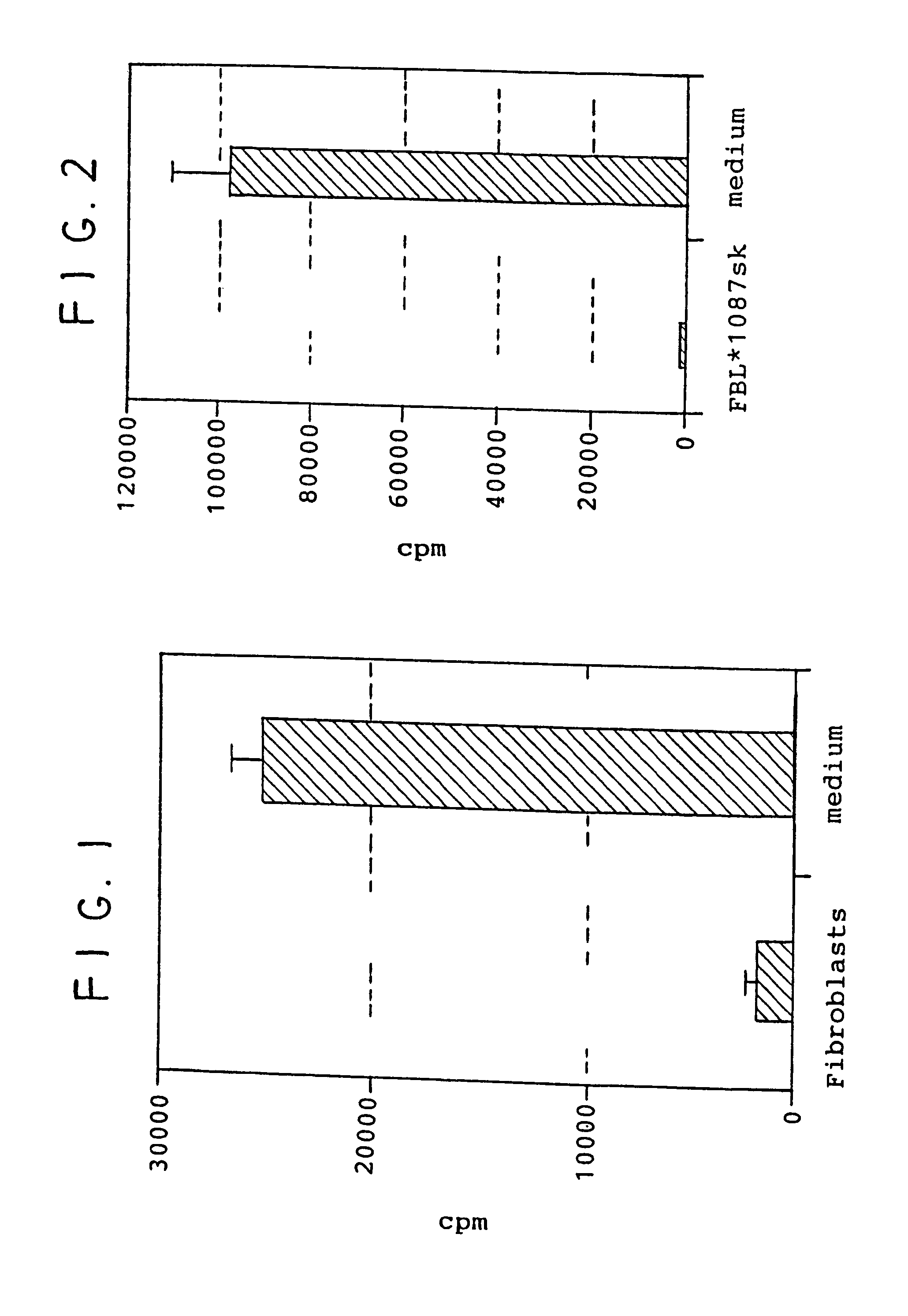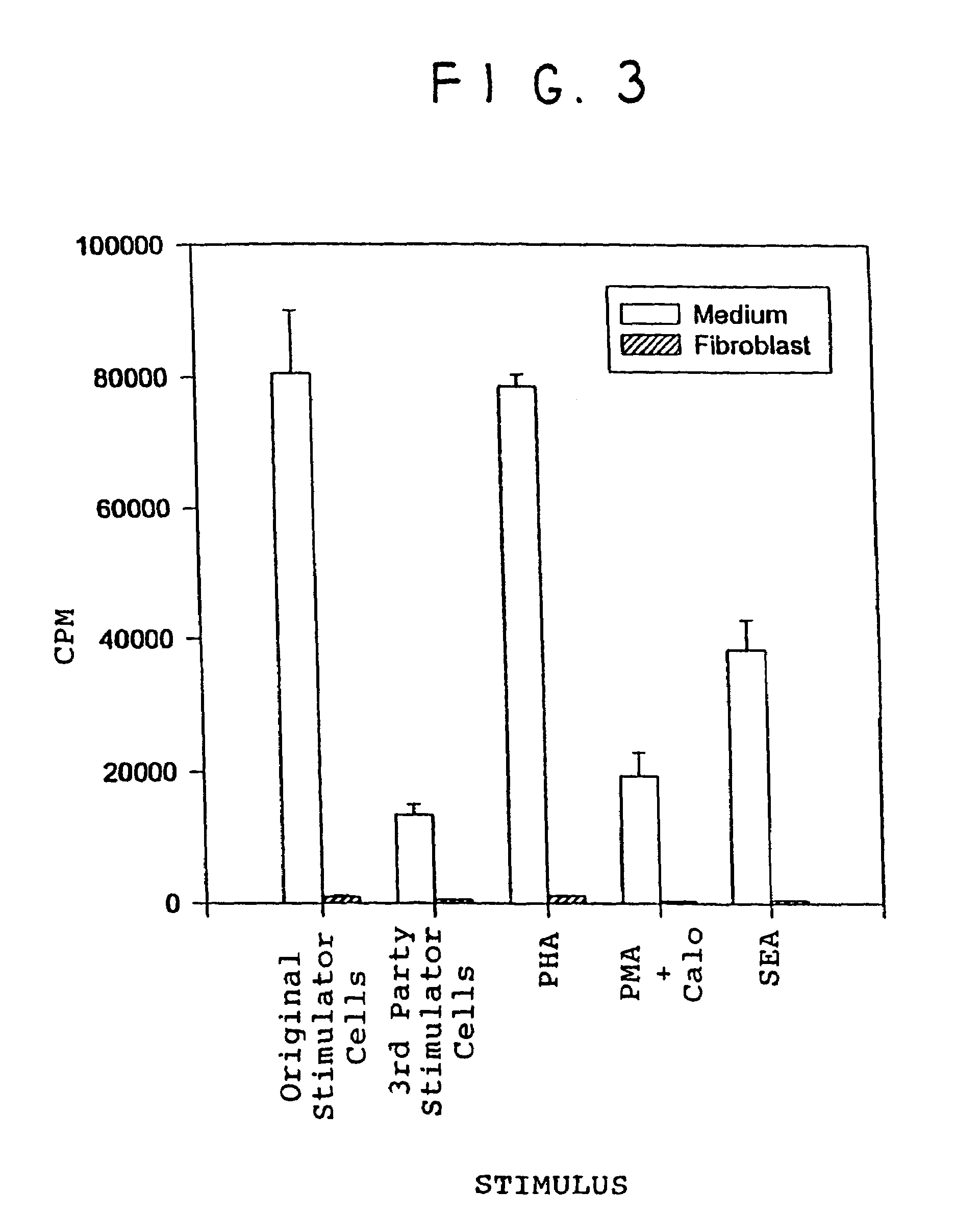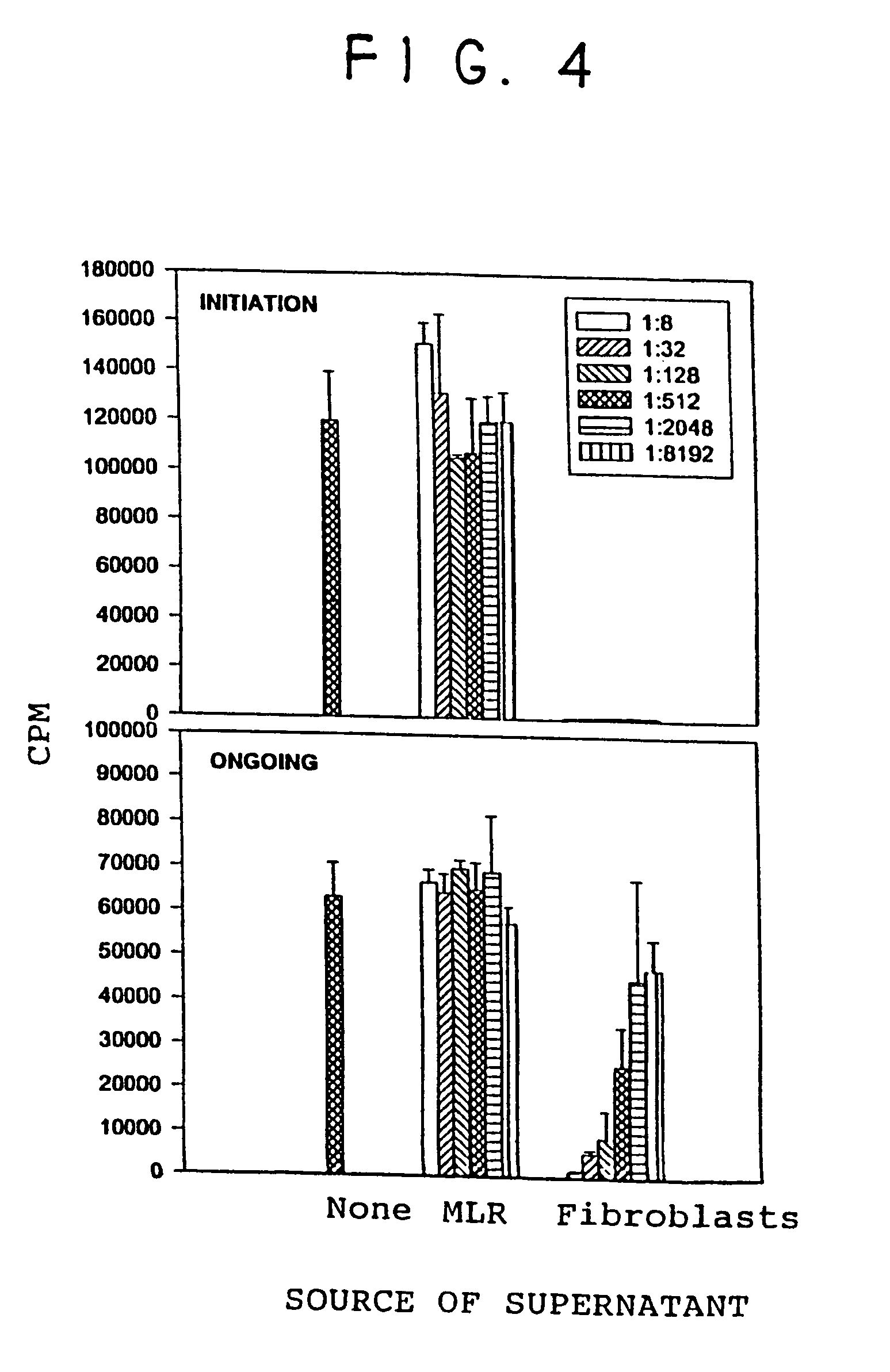Uses of fibroblasts or supernatants from fibroblasts for the suppression of immune responses in transplantation
a technology of immune response and fibroblasts, which is applied in the direction of immunological disorders, drug compositions, biocides, etc., can solve the problems of general immune suppression, immune system not distinguishing beneficial intruders, and death or functional inactivation of certain lymphocytes,
- Summary
- Abstract
- Description
- Claims
- Application Information
AI Technical Summary
Benefits of technology
Problems solved by technology
Method used
Image
Examples
example 1
Suppression of Mixed Lymphocyte Reaction
[0053]The mixed lymphocyte reaction measures the compatibility of the donor's surface antigens and is an indication of the likelihood of rejection of donor tissue. Cell surface antigens responsible for eliciting transplant rejection are class I and class II MHC antigens. T cells are alloreactive to foreign MHC antigens. Class I and II MHC molecules stimulate the mixed lymphocyte reaction.
[0054]To determine whether fibroblasts actively suppressed the allogeneic response, mixed lymphocyte reactions (MLR) were set up in tissue culture plates, with or without fibroblasts obtained from a donor unrelated to either the stimulator or responder cells.
Lymphocyte Preparation
[0055]Peripheral blood mononuclear cells (PBMC) were prepared by density gradient centrifugation on Ficoll-Paque (Pharmacia). Aliquots of cells were frozen in 90% FCS with 10% DMSO and stored in a liquid nitrogen. After thawing, the cells were washed twice with MSC medium (DMEM-low gl...
example 2
Induction of T Cell Non-Responsiveness
[0062]T cells were activated in the 1° MLR (T248@244) were collected, washed once with MSC medium (DMEM-LG / 10% FCS) and re-suspended in assay medium at 1×106 cells / ml. Cells were mixed with pre-plated fibroblasts at an approximate ratio of 10 T cells per fibroblast. T cells were incubated with fibroblasts for 3 days. In control cultures, T cells were incubated alone.
Restimulation Assay
[0063]The T cell cultures were collected, resuspended at 1×106 cells / ml, and added to 96-well plates (5×104 cells / well in 50 microliters). They were mixed with various stimuli including original stimulator PBMCs from donor 244, third party stimulator cells, phytohemagglutinin (PHA, 5 micrograms / ml), phorbol myristate acetate plus calcium ionophore (PMA 10 nanogram / ml+CaIo Inanogram / ml), or staphylococcus enterotoxin A (SEA 100 nanograms / ml). Cells were pulsed overnight (18 hours) with 3H-thymidine (5 μCi / mmol, 1 μCi / well) on day 0, 1, 2, 3, 4, 5 or 6, then harveste...
example 3
[0064]Supernatant was collected from confluent cultures of adult dermal fibroblasts (#1087SK, from ATCC, Rockville, Md.). Cells were passage 6 and in culture for 1 month at the time of supernatant harvest. Conditioned media was harvested 3 days after media change. Supernatant (“Fibroblasts”) was added at the indicated dilutions either at the initiation of MLR culture (top panel) or on day 4 of culture (ongoing, lower panel). The MLR consisted of responder T cells from donor 155 mixed with irradiated (3000R) stimulator PBMCs from donor 273. Both sets of cultures were pulsed with 3H-thymidine on day 6 of culture for 18 hrs. prior to harvesting the cells and determining the proliferative response assessed by thymidine incorporation into DNA. Controls consisted of MLR cultures to which nothing was added (“None”) and cultures to which supernatant from an unrelated 3 day MLR culture was added (“MLR”). The results demonstrate that fibroblast supernatant totally suppressed the primary MLR w...
PUM
 Login to View More
Login to View More Abstract
Description
Claims
Application Information
 Login to View More
Login to View More - R&D
- Intellectual Property
- Life Sciences
- Materials
- Tech Scout
- Unparalleled Data Quality
- Higher Quality Content
- 60% Fewer Hallucinations
Browse by: Latest US Patents, China's latest patents, Technical Efficacy Thesaurus, Application Domain, Technology Topic, Popular Technical Reports.
© 2025 PatSnap. All rights reserved.Legal|Privacy policy|Modern Slavery Act Transparency Statement|Sitemap|About US| Contact US: help@patsnap.com



